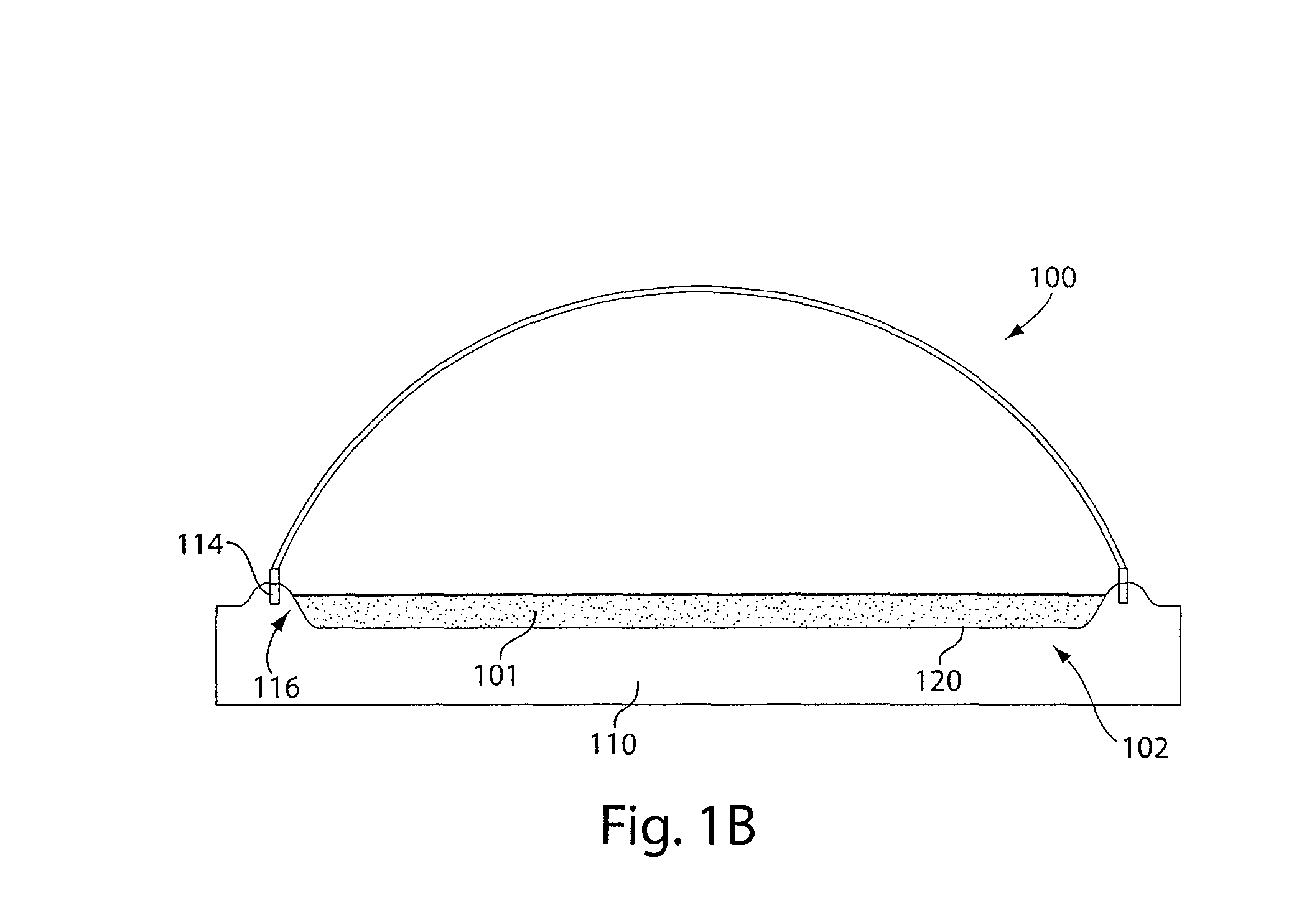Photobioreactor systems and methods for treating CO2-enriched gas and producing biomass
a photobioreactor and co2 flue gas technology, applied in the field of photobioreactors, can solve the problems of inability to meet the needs inability to meet the needs of biofuel production, and inability to capture carbon dioxide from flue gas of anthropogenic sources such as electric power plants, etc., to achieve the effect of facilitating evaporative cooling of liquid medium
- Summary
- Abstract
- Description
- Claims
- Application Information
AI Technical Summary
Benefits of technology
Problems solved by technology
Method used
Image
Examples
example 1
[0131]In this example, a laboratory test of an embodiment of a photobioreactor of the present disclosure is compared to a model of the same. Algae species Nannochloris sp. is grown in a 20 cm depth of Media 1, which is sea water comprising 0.075 g / l NaNO3 and 0.00565 g / l NaH2PO4.2H2O. The growth rates for the algae as a function of time, concentration, and light intensity, measured as photon flux, can be derived from laboratory tests with well-stirred open tanks fed with gas containing 5 mol % CO2 and the balance O2 and N2 in a 1:5 molar ratio. The test results are shown in FIG. 19 for insolation rates of 2000, 1000, and 750 μE / m2·s, and the productivity is tabulated in Table 1. As shown in FIG. 8, the productivity is not a function of concentration in this operating range. Independently, the growth rate can be predicted following the methods of Wu and Merchuk, (A Model Integrating Fluid Dynamics in Photosynthesis and Photoinhibition Processes. Chemical Engineering Science 56:3527-3...
example 2
[0136]This example illustrates the advantage of embodiments of photobioreactors disclosed herein compared to a conventional raceway pond. The reactor productivity, CO2 conversion, power requirements for the flue gas handling, and water consumption are listed in Table 3 for the highest level of solar insolence using the same operating conditions of Example 1, based on published values for CO2 conversion and evaporation rates. Flue gas is sparged into a 2-meter deep well in the raceway via a blower that compresses flue gas to 8 psig. The results show that the hybrid bioreactor achieves comparable growth rates, while attaining greater CO2 conversion and using substantially less power. The raceway pond power consumption is significantly higher due to its lower CO2 capture efficiency, requiring higher flue gas flows per unit of algae produced, and its higher pressure drop. Water consumption for both reactors is comparable because both use evaporative cooling to maintain reactor temperatu...
example 3
[0137]This example illustrates the advantage of the hybrid open / closed bioreactor at a lower ambient temperature, 5° C., compared to a raceway pond. The system of Examples 1 and 2 is operated at identical conditions, with the exception that none of the recycled media of Example 1 is directed towards the cooling zone, and low-level heat from the power plant condenser cooling loop is used to maintain the bioreactor temperature. Table 3 lists the productivity and heat duty for maintaining 25° C. in the two reactors. The results show that this reactor has significant advantages over an open raceway pond.
[0138]
TABLE 3Comparison of Bioreactor Performance at 5° C. AmbientLightReactorIntensityproductivityHeat dutyExample(μE / m2-s)(g / m2-hr)(kW / m2)Example 3 -10001.10.02PhotobioreactorExample 3 -10001.10.10Raceway pond
PUM
| Property | Measurement | Unit |
|---|---|---|
| gas pressure drop | aaaaa | aaaaa |
| wavelength | aaaaa | aaaaa |
| length | aaaaa | aaaaa |
Abstract
Description
Claims
Application Information
 Login to View More
Login to View More - R&D
- Intellectual Property
- Life Sciences
- Materials
- Tech Scout
- Unparalleled Data Quality
- Higher Quality Content
- 60% Fewer Hallucinations
Browse by: Latest US Patents, China's latest patents, Technical Efficacy Thesaurus, Application Domain, Technology Topic, Popular Technical Reports.
© 2025 PatSnap. All rights reserved.Legal|Privacy policy|Modern Slavery Act Transparency Statement|Sitemap|About US| Contact US: help@patsnap.com



